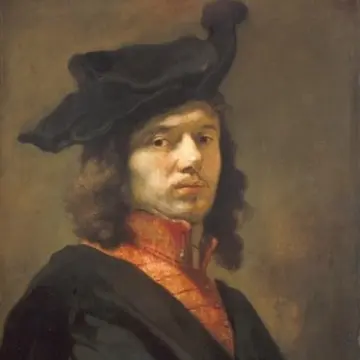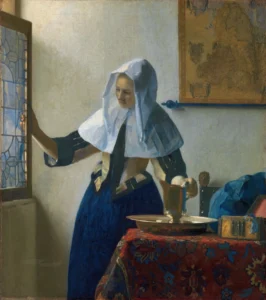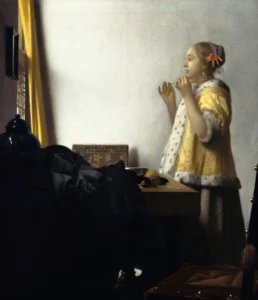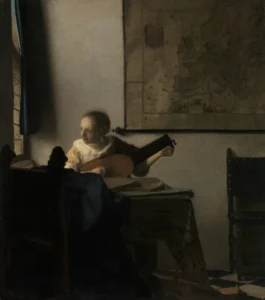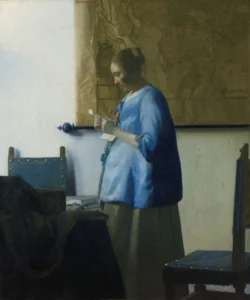The Love Letter (1669 - 1670)
Created around 1669-1670, The Love Letter is an exquisite painting by Dutch master Johannes Vermeer. It features a woman in elegant attire receiving a love letter from her maid in a beautifully lit room. Rich in symbolism, it portrays the themes of love and intimacy, enhanced by Vermeer’s masterful use of light, shadow, and composition. The striking details, such as the musical instrument and the removed slipper, whisper of deeper emotions and societal norms of the time.
1669 - 1670
About the Artwork
Johannes Vermeer, a luminary of the Dutch Golden Age, created The Love Letter during a time when the exploration of domestic life became a central theme among artists. This particular piece not only portrays a seemingly simple moment, but also immerses viewers in a narrative of personal connection and unspoken emotions. The elegantly dressed woman appears absorbed by the letter she holds, revealing the depths of affective ties in her genteel world. Vermeer's meticulous techniques, including the play of light and perspective, breathe life into the canvas, inviting us into a private space, filled with subtle hints of longing and secrecy. Historically, this artwork has had a journey of significance, including its association with John III Sobieski and a dramatic theft in the 1970s, heightening its allure.
Did You Know
Johannes Vermeer was known for his unique method of painting, often using a limited palette and focusing on natural light, which gives his works a glowing quality. He also employed a camera obscura to assist with perspective.
The act of delivering a love letter, as depicted in The Love Letter. was a significant romantic gesture in the 17th century, encapsulating the subtleties of courtship in a time when direct expressions of affection were less common.
The Love Letter has traveled through time and history, originally owned by a Polish monarch before becoming part of the esteemed Rijksmuseum collection. Its brief heist in 1971 added to its storied past, leading to heightened interest from art historians and lovers alike.






